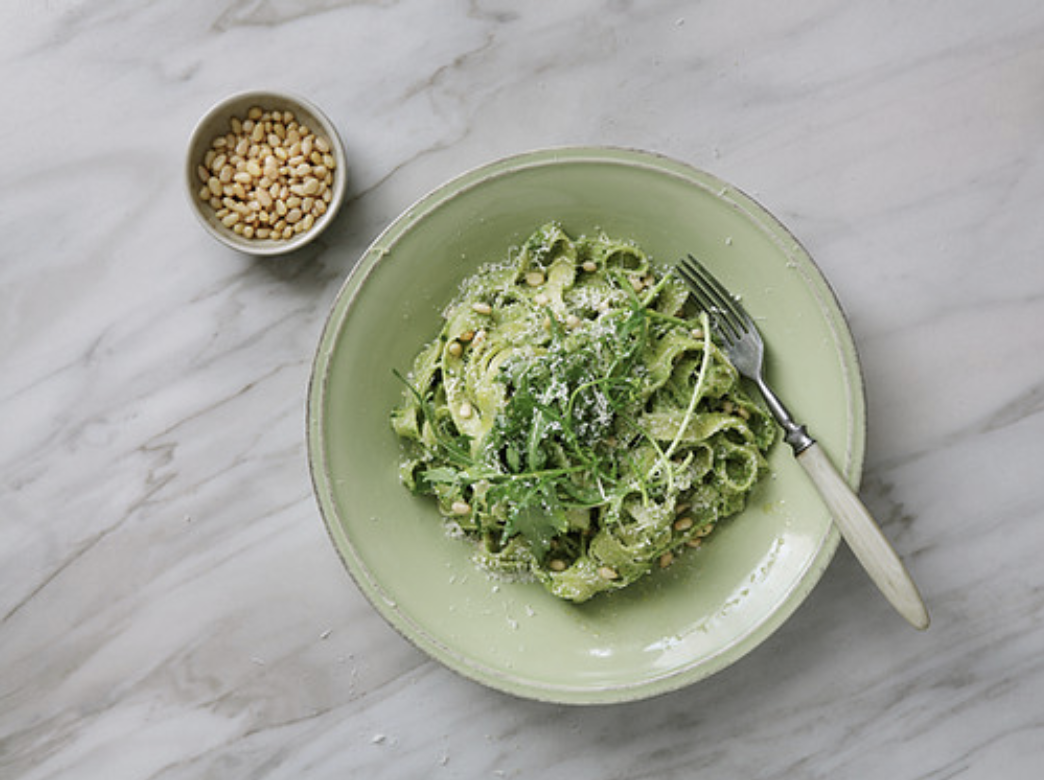The world of pasta alternatives and replacements has been blowing up in recent years. I’m guessing it has something to do with the increased popularity of low carb diets and an increased awareness of gluten allergies and sensitivities. The food industry has been pretty successful in churning out some awesome replacement products, many of which almost successfully emulate the real thing as far as taste and texture, while others…not so much. Many of my clients ask about the benefits of switching to various pasta alternatives, so I wanted to put together some information about the more popular choices on the market, to help you make the right choice for YOU!
Whole wheat pasta
Whole wheat products are preferred to “white” products due to the higher fiber, vitamin and mineral content. When wheat is made into white flour, it is stripped of its amazing nutrients to create a smoother texture. Whole wheat pasta is made from whole wheat flour, so it hasn’t been stripped if all the good stuff. The carb content is slightly higher in white pasta vs. wheat pasta (we’re talking just a few grams typically), however, the higher fiber content of wheat pasta means you may not have such dramatic a spike in sugars, which is always a plus! Fiber also helps to keep us fuller, longer, so you may be inclined to eat less of the wheat variety and may even eat less at your next meal. Wheat pasta can be slightly grainy in texture and it has a more earthy flavor than the regular stuff, but it’s pretty similar! This can be a great pasta for those looking to increase fiber, vitamin and mineral intake, but it is not the best choice if you are hoping to decrease calorie or carb content, or those going gluten free.
Banza – Chickpea Pasta
When it comes to taste and texture, Banza is probably my favorite pasta alternative. It is a pasta made from chickpeas (AKA garbanzo beans) and just like chickpeas, it’s high in fiber! A 2 oz. serving (about 1 cup dry pasta) offers 5g of fiber and about the same amount of total carbs as regular pasta, however, the net carbs are lower due to the higher fiber content. In case you’re not familiar with net carbs, it is the amount of carbs you get when you take the total carbs and subtract the fiber content. This is a popular practice because fiber passes through us mostly undigested, and therefore does not contribute to higher blood sugars, so counting net carbs is a more accurate way to count carbs. Another benefit of Banza is the high protein content. Similar to fiber, protein helps to prevent blood sugar spikes and also helps to make us feel full for longer periods of time. For vegetarians or even people looking to reduce their meat intake, this is a perfect product! Add some veggies to the mix and you have everything you need: high-fiber carbs, protein, and vegetables! Overall, the flavor and texture is very similar to regular pasta, just slightly denser or more hearty. Best cooked slightly al dente!
Barilla Veggie Pasta
Honestly, I think this pasta is a bit misleading. The banner on the box that says “veggie” makes me think this pasta is going to be mostly vegetables, however, the first ingredient (and therefore the most abundant ingredient) is the same as regular old pasta: semolina and durum wheat flour. To be fair, the next couple ingredients are zucchini and spinach puree, so there are veggies present, but the carb, calorie and fiber content are basically the same as regular pasta. If your aim is to increase your veggie intake for vitamin and mineral sake, or if you are trying to sneak some veggies into your families diet, this could be a good product. If you are looking for pasta alternatives that have more fiber, less carbs, and/or more protein, this isn’t the best choice. The taste and texture are great though!
Edamame pasta
Edamame is soy beans, most commonly served in green pods that look similar to sugar snap peas. Compared to the others, this pasta alternative is lowest in carbs and highest in fiber and protein. A 2oz. serving packs a whopping 13g of fiber and 24g of protein! The texture is not as appealing as regular pasta or Banza, and the flavor is not as neutral but it’s still pretty tasty with a good sauce. Unfortunately, this pasta seems to cause some pretty intense bloating, so I would suggest keeping portions small and/or taking it with a natural digestive enzyme like Beano. Edamame pasta is a great choice for a meatless meal, just add some veggies (but maybe avoid things like broccoli, cauliflower, and brussels sprouts with this one to avoid additional bloating!).
Spaghetti squash
This pasta alternative is the lowest in calories and carbohydrates, with a relatively low fiber content. I love the taste and texture of spaghetti squash, but I wouldn’t say the texture is similar to that of regular pasta. With both spaghetti squash and zoodles (noodles made from only zucchini), I have found that I am often hungry a couple hours after the meal, even when it’s topped with meat sauce. I often like to mix in a small portion of Banza (my favorite) to increase the fiber content and keep me fuller, longer. For those looking to lose weight and/or reduce carbs, spaghetti squash (or zoodles!) can be a great stand in for pasta or even an addition to your pasta dish, so that you can keep pasta portions very reasonable.
This is by no means a list of every option out there. There were some other options I researched but didn’t write about if I hadn’t personally tried them. If you have tried a pasta alternative that isn’t on this list, let me know how you liked it! (Instagram @diabetes_dietitian) I’d love to hear from you.
